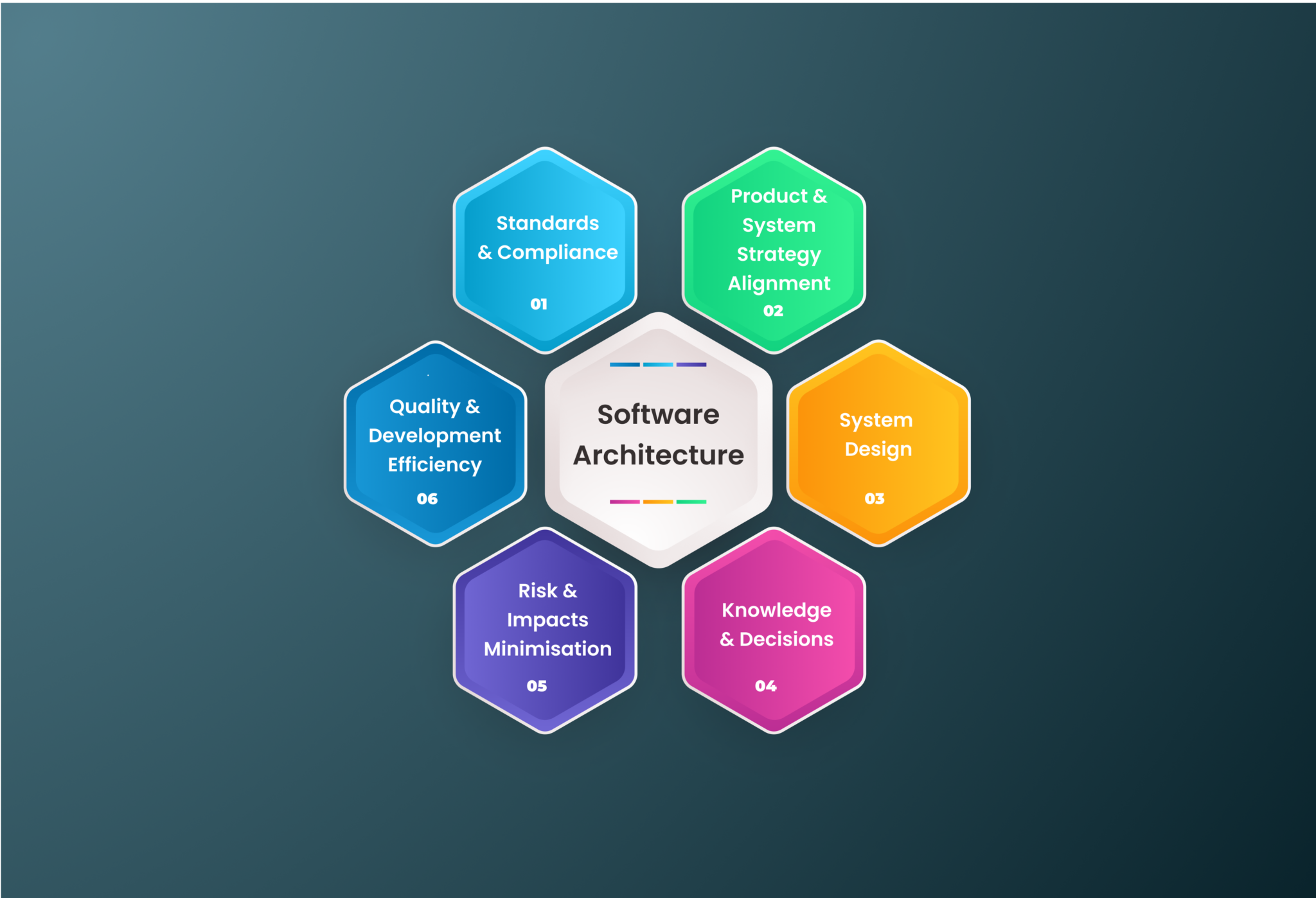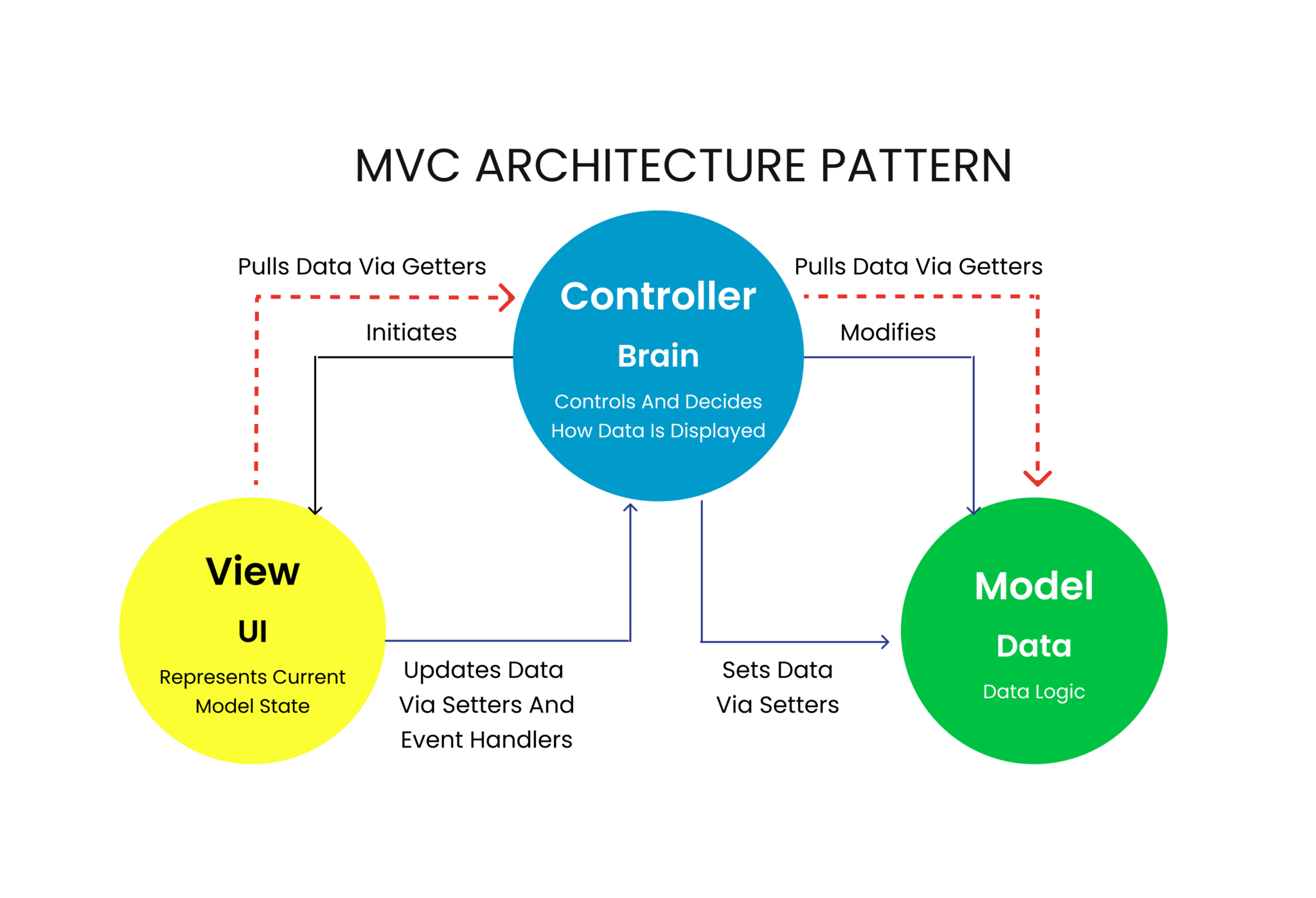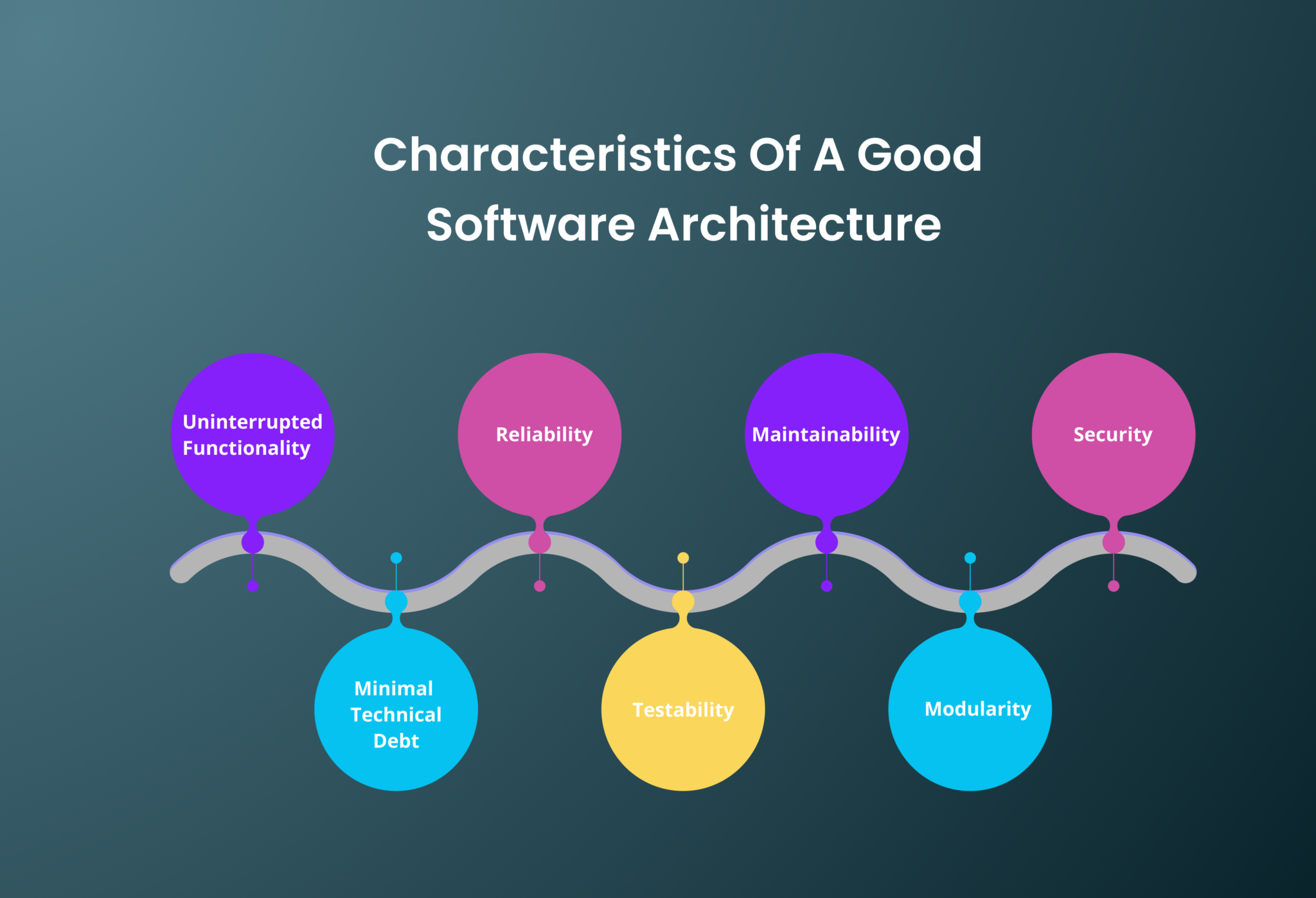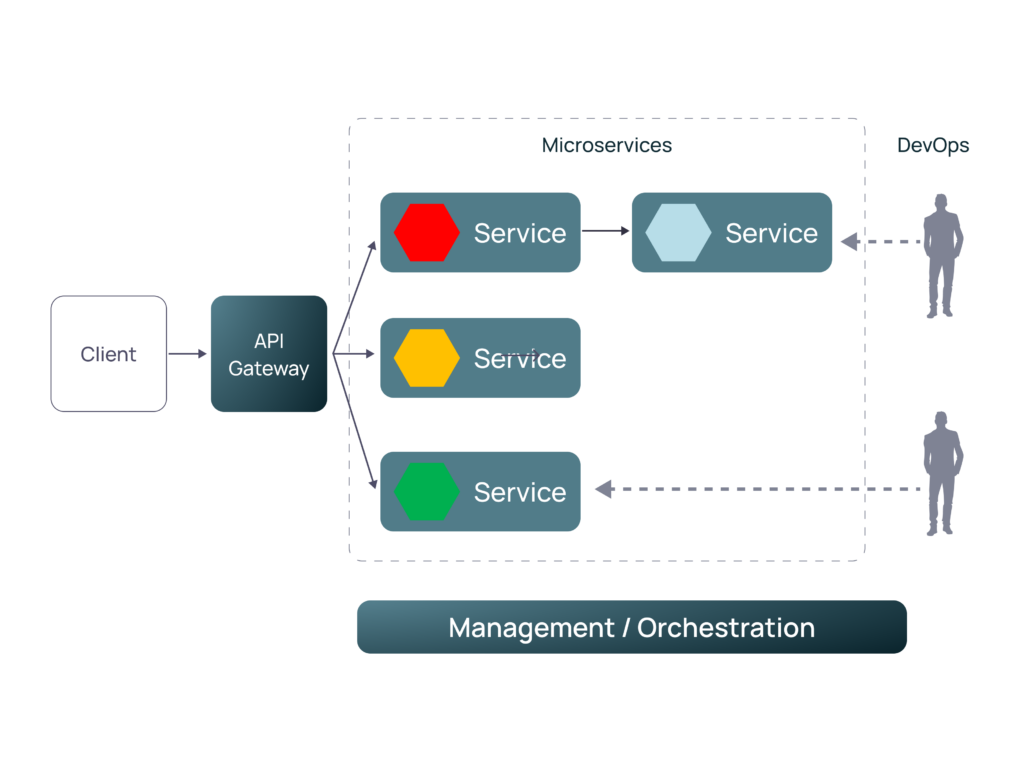Software architecture in software engineering is an important topic. A good software architecture is essential to preserve the qualities of the software and to stand the test of time. Software development is like constructing a house. As you know, the foundation of a house matters the most. If the foundation is strong, the house will be strong. But if you try to build a house without a strong foundation, the house will crumble. Apply the same theory to software development. A software system is the home and software architecture is the foundation.
If the software architecture is strong, it will last and serve the customer’s needs across its lifetime. If not, it will crumble real fast. Software architecture ensures the software has a robust foundation and is precisely what the customer wants. Through this post, learn what software architecture is, why it is important, and what techniques you must employ to create secure, scalable, and dependable software.
How to Define Software Architecture in Software Engineering?
The essential underlying structure of a software system is its architecture. Software architecture describes what software is or can be, just as physical architecture defines and limits how a certain structure can be used efficiently. While software architecture is often invisible to users, it shapes their experience on a particular piece of software. Similarly, software architecture has a significant influence on software developers. When poorly chosen, software architecture can cause trouble to developers by confining them to a system that is difficult or expensive to modify.

However, when done correctly, software design offers the ability to expand or adapt to meet future needs. Software architecture is all about defining the essential abstractions, modules, interfaces of the software and developing guidelines and principles to ensure that the system’s functional and non-functional needs are met.
A good software architecture contributes to the definition of performance, quality, scalability, maintainability, manageability, and usability. The idea is to make your program adaptable, extensible, and capable of evolving when new requirements emerge. For methodical software development, it is critical to think through software architecture. This allows you to easily design, test, deploy, and manage software while reducing the chance of errors, defects, and other issues along the software development lifecycle.
Software Architecture – MVC pattern example
The Model-View-Controller (MVC) pattern is a popular software architecture for creating user interfaces in web and desktop applications. The software system is divided into three components in this pattern:
1. The Model
The Model contains the application data and logic that describes how to show the data to the user. It works with the database, processes data, and computes.
2. The View
The view shows the data to the user. The view understands how to get the model’s data, but it has no idea what that data represents or what the user may do with it. View simply represents the data displayed on the screen by the application. HTML, CSS, and JavaScript are commonly used to implement the view.
3. The controller
The controller is right in between the view and the model and it monitors events caused by the view or any other external source and responds accordingly. In most circumstances, the response is to call a method on the model. Because the view and the model are linked via a notification mechanism, the outcome of this action is automatically reflected in the view.
The MVC pattern has the advantage of separating all of the components of a software system, making it easier to maintain, test, and extend the product. Modifications to the user interface have no effect on the model or controller, and vice versa. You may also simply change and improve the system without adding bugs or unexpected behavior. The MVC pattern is an outstanding illustration of how software development architecture establishes a high-level system structure that serves as a blueprint for software development and guarantees that the system achieves its functional and non-functional requirements.

Why is Software Architecture Important?
A well-organized software architecture helps to assure the internal quality of the software’s lifetime. A developer may want to jump straight in and start coding. However, it’s important to keep in mind that a software system’s foundation is its architecture. The foundation, like other types of engineering, has a significant impact on the quality of what is built on top of it. As such, it is extremely important in terms of the system’s effective development and eventual maintenance.
Some of the early decisions related to software architecture need to be made while developing the architecture. These decisions hold so much importance because they influence upcoming decisions.The larger and more complicated a software system, the more a well-thought-out architecture is required to succeed. When done correctly, software architecture provides a variety of benefits that considerably boost the likelihood that the software system will succeed.
Basically, software architecture helps you to ensure you produce high-quality software.
What are Software Architecture Principles?
The software architecture needs to follow the infamous S.O.L.I.D. principles, which refer to:
- S-Single Responsibility
- O-Open/Closed
- L-Liskov Substitution
- I-Interface Segregation
- D-Dependency Inversion

1. Single Responsibility
According to the single-responsibility concept, each class should have only one responsibility. The goal is to encourage developers to write smaller, more focused classes that are simpler to test and manage.
2. Open-Closed
When it comes to the open-closed principle, you should be able to add new functionality to a class without affecting its existing code. The purpose is to encourage the use of interfaces and abstract classes in the development of flexible, expandable systems.
3. Liskov Substitution
The Liskov Substitution Principle states that subclasses should be replaceable with base classes. You should be able to substitute a subclass for its parent class without encountering errors or unexpected behaviors. This idea promotes the development of reasonable hierarchical class systems.
4. Interface Segregation
According to the interface segregation principle, all user interfaces should be distinct. It is also better to have multiple intent-driven interfaces rather than one general-purpose interface. Here, the goal is to support the development of unified, focused interfaces that are easier to use and maintain.
5. Dependency Inversion
As per the dependency inversion concept, the modules should be dependent on interfaces or abstract classes rather than real classes and functions. This idea promotes the use of interfaces and abstract classes in the development of loosely linked, flexible systems.
Good Characteristics of Software Architecture in Software Engineering
Here are the good software architecture characteristics that you need to learn about:
Functionality: The software system should function properly, with no bugs or interruptions.
Reliability: Regardless of the environment or input numbers, the software system should perform optimally.
Maintainability: Your team should be able to make new improvements to the program without interfering with the functionality of the present system.
Minimal Technical Debt: The source code needs to be clean and organized. This is important to minimize code refactoring efforts and associated technical debt.
Security: The program should be protected against any internal and external attacks.
Testability: You need to seamlessly carry out software testing to identify any bugs and minimize the time to market.
Modularity: The software system should be divided into smaller, more manageable pieces. It is beneficial when introducing microservices architecture and scaling operations.

What are the Most Popular Software Architectural Patterns?
A software architecture pattern can be defined as a reusable solution that aids in the design of software architecture for any commonly encountered issues. Software architecture patterns are a medium to capture and reuse design structures that have performed effectively. Creating architecture entails choosing, modifying, and combining patterns.
According to Mark Richards, there are five major software architecture patterns to consider utilizing throughout the design process, which include the following:
1. Layered Architecture
The layered software architecture, as the name implies, employs a tiered method in which one layer provides services to the higher layer. Because it is straightforward to design and maintain, this layered method is popular in the software business. All of the components in the layered architectural pattern are interrelated and independent of one another. The MVC (Model-view-controller) pattern is a common example of a three-layer architectural pattern.
Should you choose a layered architecture pattern?
You can choose a layered architecture pattern if you’re working on a tight schedule and you need to build an app ASAP. Layered architecture pattern is a good choice if your app seeks strict maintainability and testability standards. Other than that, choose it if your app is a business app that needs to embrace traditional IT structures.
2. Software architecture in software engineering: Event-driven Architecture
An event-driven is a more current method that focuses on “event” data. This approach enables app modules to respond to defined events as they occur. It includes event-processing components with a single purpose that listen for and process events asynchronously. These patterns are classified into two types: broker topology and mediator topology.
Should you choose an event-driven architecture pattern?
Choose an event-driven architecture pattern if you’re creating a complex app that requires seamless data flow and has asynchronous data flow systems. It’s also the ideal choice if you’re building user interfaces.
3. Microkernel Architecture
The microkernel pattern which is also referred to as the plugin architecture pattern is another popular pattern. When software teams create systems with interchangeable components, they use this architecture pattern. This pattern is suitable for applications that need the flexibility to adapt to changing system needs. The microkernel architecture pattern is divided into two segments, such as:
Extended functionalities
Independent components named plugins support the core by providing specialized processing and additional capabilities via custom code.
Minimal functional core
For complex conditional procedures, the system incorporates general business logic but no specialized code.
Should you choose a microkernel architecture pattern?
Microkernel architecture pattern is the ideal choice if you’re building a workflow-oriented app and the app requires separation between low-level and higher-level functionalities. Also, you can choose it if you’re building a task and job scheduling app.
Likewise, if you’re creating an enterprise app, the microkernel architecture pattern is best as it offers extensibility, scalability, and portability.
4. Microservices Architecture
The microservices architectural pattern is an example of modular software architecture. It is based on the creation of small independent programs that communicate with one another to ensure that the overall system runs well. This technique allows developers to deploy apps separately while also providing a high level of application and component decoupling within the app. Because microservices communicate, developers must guarantee that the messages transmitted between them remain backward-compatible.

Should you choose a microservices architecture pattern?
Microservices architecture pattern is a good choice for your project if you’re dealing with multiple corporate data centers with well-defined boundaries. Also, if you’re creating an app with rapidly growing data systems. Likewise, if you’re re-writing a monolithic app to a more sustainable pattern or even building websites with small components, this pattern is ideal.
5. Space-Based Architecture
The space-based architecture pattern is able to address problems related to scalability and concurrency. It’s useful for apps with variable and unpredictable concurrent user volumes. A distributed technique in which data and processing are distributed among several nodes in a space-like grid, commonly used for applications requiring high scalability. It can be valuable in situations such as Real-Time Analytics, when data streams are distributed for quick insights.
Should you choose a space-based architecture pattern?
In case you’re building an eCommerce or social website, you can choose a space-based architecture pattern. Also, if your app manages high-volume data like clickstreams and user logs or the app addresses scalability and concurrency issues, a space based architecture pattern is the best choice.
What Are the Best Tools for Software Architecture Design?
1. UML Modeling Tools
The Unified Modeling Language (UML) is a visual modeling language that is used to create software systems. It is made up of a series of diagrams that illustrate various features of the system. Users can generate and edit UML diagrams using UML modeling tools. They include drag-and-drop capabilities for adding objects to diagrams, automatic layout tools for organizing objects, and validation tools to ensure diagrams adhere to UML standards.
The most popular UML modeling tools include Rational Rose, Enterprise Architect and Visual Paradigm.
2. Whiteboarding and Sketching Tools
Whiteboarding and sketching tools are software architecture diagram tools that help you to create quick diagrams and sketches of software architectures. These tools are most useful whenever you and your team are brainstorming different design ideas.
The most commonly used whiteboards and sketching tools include Balsamiq, Sketch, Lucidchart and Mermaid.
3. Code Editors and IDEs
Code editors and integrated development environments (IDEs) may produce and edit code as well as provide debugging, refactoring, and code analysis capabilities.
The most popular code editors and IDEs include Visual Studio Code, IntelliJ IDEA and Eclipse.
4. Architecture Tools
You can use tools related to architecture and design to produce good software architecture diagrams. Some of the best tools you can try include Sparx Systems, Archi, Draw.io, Enterprise Architect and Microsoft Visio.
5. Version Control Systems
Version control systems are critical for controlling software architecture design changes over time. They enable architects to track changes, interact with others, and undo modifications when necessary. Two of the most used control systems include Git and SVN.
What are Good Software Architecture Practices?
Let’s discuss the best software architecture practices that help to create scalable, stable, and dependable software systems that satisfy the needs of your organization:
- Before you begin designing the software system, make sure you understand its business needs. It would ensure that the software satisfies the business goals of the stakeholders and is what you expected.
- Keep your software architecture simple so that it can be managed and scaled easily over time. Avoid any complexity or layer that may later complicate matters.
- While designing the architecture of your software system, adhere to the modular design practice (breaking down a large system into small modules). They are more difficult to scale, maintain, and reuse.
- Use design patterns in your software architecture because they provide a systematic approach to problem solving and allow you to easily manage and scale the software system.
- While functional needs must be considered, non-functional requirements such as performance, security, and reliability must also be considered. Addressing them early in the design phase will ensure that all needs are met.
- Don’t underestimate the value of documentation in communicating design decisions to stakeholders and resolving difficulties, ensuring that design designs are clear and maintainable over time.
- Early and frequent testing of the software architecture is required to ensure that the program meets both functional and non-functional criteria.
Wrapping up
Through this post, we discuss all about software architecture in software engineering. It’s useful to understand the importance of software architecture when building software. Also, we emphasized principles of software architecture, popular architecture patterns that you need to know about and the best tools for software architecture design. Through this post, we hope that you get to figure the best and most suitable software architecture pattern for your project.

